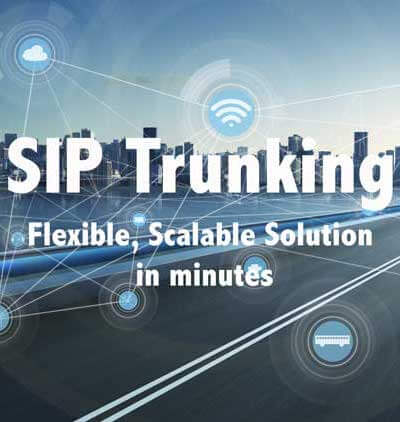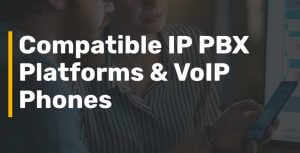SIP Trunking Implementation: Common Challenges and How to Overcome ThemSIP trunking is revolutionizing the way businesses connect their phone systems to the internet, providing unparalleled flexibility and cost savings. However, the implementation of SIP trunking can...
SIP Trunking Security: How to Keep Your Business Communications Safe
SIP Trunking Security: How to Keep Your Business Communications Safe
Businesses today rely heavily on their communication systems to stay connected with customers, clients, and colleagues. As more companies move their communication systems to the cloud, SIP trunking has emerged as a popular method for transmitting voice and other communication protocols over the internet. This allows businesses to enjoy the benefits of IP telephony while reducing costs. However, with this convenience comes the risk of security threats, as SIP trunking is vulnerable to a range of attacks. In this article, we will explore some of the common security threats associated with SIP trunking, and provide recommendations on how to keep your business communications safe.
In this article, we will discuss the common security threats associated with SIP trunking and provide best practices for keeping your business communications safe.
Common Security Threats
SIP trunking can be vulnerable to a range of security threats, including:
-
- Toll fraud: Attackers can use stolen or guessed passwords to gain access to a company’s PBX system and make international calls at the company’s expense.
- Denial-of-service (DoS) attacks: Attackers can flood a SIP trunk with bogus requests, causing it to crash and disrupt communication.
- Eavesdropping: Attackers can intercept and record voice and data traffic transmitted over the SIP trunk, potentially exposing confidential information.
- Call interception: Hackers can hijack a SIP session and redirect it to a different destination, potentially exposing confidential information.
Best Practices for SIP Trunking Security
To protect your business communications, you should follow these best practices:
-
- Secure Your Network: Use firewalls and other security measures to protect your PBX and SIP trunk from external threats. This can include setting up virtual private networks (VPNs) to encrypt data transmitted over the internet.
- Use Strong Authentication: Implement strong passwords and multi-factor authentication to prevent unauthorized access to your PBX and SIP trunk. You should also change passwords regularly and limit access to those who need it.
- Monitor Traffic: Use monitoring tools to keep an eye on your SIP trunk traffic and detect anomalies that may indicate an attack. This can help you identify and respond to threats more quickly.
- Encrypt Your Data: Use encryption to protect voice and data traffic transmitted over the SIP trunk. This can make it more difficult for attackers to intercept and eavesdrop on your communications.
- Use a Reputable Provider: Choose a reputable SIP trunking provider that has a proven track record of providing secure and reliable service. You should also review the provider’s security policies and ask about their data protection measures.
In conclusion, SIP trunking is a valuable solution that enables businesses to modernize their communication systems and reduce costs. However, as we have seen, it also introduces new security risks that must be addressed. By implementing the best practices discussed in this article, you can mitigate these risks and ensure that your business communications remain safe and secure. Keep in mind that securing your SIP trunking is an ongoing process that requires ongoing vigilance and attention to the latest security threats. By staying informed and taking proactive measures to protect your communications, you can enjoy the many benefits of SIP trunking while minimizing the risk of potential attacks.
Why to manage a phone system
when you can get for free.
New Posts
SIP Trunking Implementation: Common Challenges and How to Overcome Them
Differentiation Strategies for VoIP Resellers: Finding Your Niche in the Market
Differentiation Strategies for VoIP Resellers: Finding Your Niche in the Market As the VoIP market continues to grow, so does the competition among resellers. In order to succeed as a VoIP reseller, it's important to differentiate yourself from other players in the...
The Future of VoIP Reselling: Trends and Opportunities
The Future of VoIP Reselling: Trends and OpportunitiesVoIP is a communication technology that allows voice communication over the internet instead of traditional phone lines. In recent years, VoIP has become increasingly popular due to its cost-effectiveness,...
Learn more about our Products
Visit SIP Trunking Pricing to see which plan best suits your business!
Our plans have been packaged together to give you optimum output.










